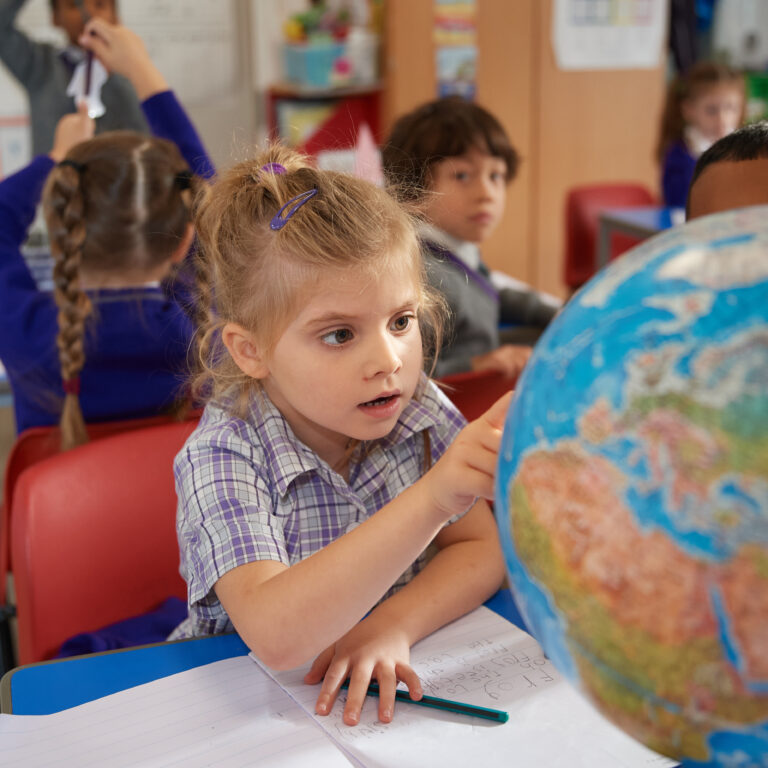I am going to tempt fate and declare that ‘spring has sprung!’ – cue snow and freezing temperatures. This is such a wonderful time of the year, with nature waking up, the sun trying to be more present and the days lengthening. I have caught myself, as well witnessed several other people, just stop and bask in a little spring warmth as we move around our school site this week. It really is good for the soul!
A hallmark of the magic of spring is the sounds – stopping around the school this week we have heard a beautiful chorus of birdsong, outside learning and playing, music and singing, and happy children learning; all wonderfully fitting as we have been looking at our communication skills this week.
It began on Monday with a rather upbeat assembly presented by MTech around a new digital music club we are hoping to launch next term. The demonstration had the children instantly dancing and it was a lovely reminder of the power of music. On Tuesday, we celebrated the final concert for our Year 6 cohort, and it was a fitting way to showcase the musical journey that they have been on during their time with us. The standard of performance, confidence and style was very impressive! Our spring concert series is a wonderful celebration of the hard work of Mrs Lane and all the music teaching staff across the school – BPS is very much alive with the wonderful sound of music.
Of course, communication takes many forms, and we promote opportunities across the curriculum to develop the children’s oracy and presentation skills. We encourage them to use a variety of media – from painting to performance, acting to all embracing technology – when useful or appropriate – has transformed the way our children can express their understanding and their knowledge. Giving equal time to modern and traditional methods of communication is important to us and it is also worth considering some less obvious examples. Some research suggested these other interesting ideas….
Emoji Speak: Emojis have become a universal language of sorts, transcending linguistic barriers. From to , these tiny characters add a dash of humour and emotion to our digital world.
Cultural Gestures: Different cultures have their own unique gestures that can be both hilarious and meaningful. For instance, the Italian gesture of pinching one’s chin to express doubt or the Brazilian “okay” sign, which involves forming a ring with your thumb and forefinger, are amusing examples.
Whistled Languages: In some parts of the world like the Canary Islands, Turkey, and Mexico, people communicate through whistling. This not only serves as an efficient means of communication across long distances but also adds a whimsical touch to everyday interactions.
Animal Sounds: In some cultures, people mimic animal sounds to convey messages or simply for fun. Whether it’s imitating a rooster to wake someone up or making a monkey noise to express surprise, these playful gestures add a humorous flair to communication.
Sign Language is a rich and expressive form of communication that utilises hand movements, gestures, facial expressions, and body language to convey meaning. Each sign represents words, phrases, or concepts, allowing individuals who are deaf or hearing impaired to communicate effectively. Beyond mere translation, sign language is a vibrant language with its own syntax, grammar, and regional variations. It fosters a sense of belonging and inclusivity within the deaf community and enables seamless interaction with hearing individuals who learn to sign. Whether in intimate conversations or public settings, sign language embodies the power of visual communication, enriching human connections and fostering understanding across linguistic and cultural barriers.
Body Language
Body language refers to the non-verbal signals and cues that people use to communicate with others. It includes gestures, facial expressions, posture, eye movements, and even the tone and pitch of voice. Body language plays a crucial role in conveying emotions, intentions, and attitudes, often complementing or contradicting verbal communication. For example, crossed arms might indicate defensiveness or discomfort, while leaning forward could suggest interest or engagement. A furrowed brow might signal confusion or concern, while a smile typically signifies happiness or friendliness.
Understanding body language can enhance communication skills by providing insight into the underlying emotions and intentions of others. It can also help individuals convey confidence, empathy, and sincerity in their interactions. Additionally, being mindful of one’s own body language can improve self-awareness and communication effectiveness in various social and professional contexts. Overall, body language serves as a powerful tool for expressing ourselves and connecting with others on a deeper level, often speaking volumes even when words are not exchanged.
Behaviour – Here at BPS we know that behaviour is a form of language, albeit non-verbal. Just like spoken or written language, behaviour conveys messages, expresses emotions, and communicates intentions. It should always prompt the question, “what is this person trying to communicate?”
We finished this last full week of term with a truly incredible Year 3 and 4 production of “What a Knight”. It was a fabulous show full of great songs, action scenes and some of the best comedy performances I have seen in a very long time. The delivery was brilliant and the whole production once again highlighted the value of school productions and developing the skills of oracy and being part of something of which you can be proud! The audience certainly felt this as we watched our wonderful children perform and once again fill our school with the sound of music and laughter!


